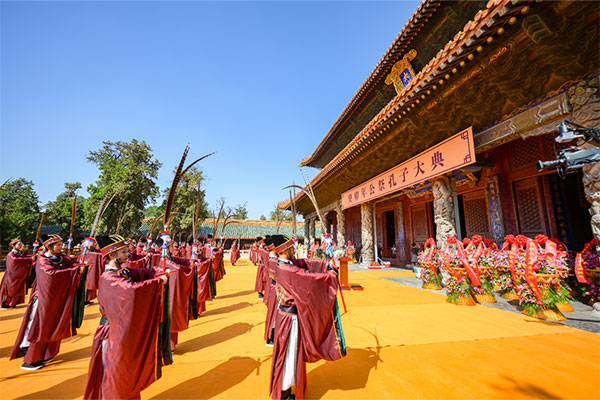Chinese Intangible Cultural Heritage - Confucius Memorial Ceremony
Introduction
The Confucius Memorial Ceremony, also known as the "Confucius Worship Ceremony" or "Grand Ceremony of Confucius Worship," is a solemn ritual held in ancient China to honor Confucius, the founder of Confucianism. This ceremony is not only a tribute to Confucius but also a means of inheriting and promoting Confucian culture. The ceremony is typically held on Confucius's birthday (the 27th day of the eighth lunar month) and is one of the most significant events in Chinese traditional culture.
History
The history of the Confucius Memorial Ceremony dates back to 478 BC, the year after Confucius's death. At that time, the ruler of the State of Lu held the first memorial ceremony to honor Confucius. After the Han Dynasty, the ceremony gradually became institutionalized and evolved into a state-level ritual. During the Tang and Song Dynasties, the ceremony was further standardized, reaching its peak in the Ming and Qing Dynasties, when it became an essential part of imperial rituals.
Regional Characteristics
The Confucius Memorial Ceremony is primarily held in Qufu, Shandong Province, the hometown of Confucius. The Confucius Temple in Qufu is the central venue for the ceremony, preserving a wealth of cultural heritage and historical architecture. Each year, the ceremony attracts scholars, tourists, and Confucian culture enthusiasts from around the world, making it an important window for showcasing Chinese traditional culture.
Cultural Significance
The Confucius Memorial Ceremony is a vital carrier of Chinese traditional culture. Its rigorous and solemn ritual procedures reflect the core values of Confucianism. The ceremony is not only a commemoration of Confucius but also a means of inheriting and promoting Confucian thought. Elements such as music, dance, and traditional attire in the ceremony are imbued with profound cultural and historical significance.
Ceremony Procedures
The Confucius Memorial Ceremony involves a highly complex series of procedures, including welcoming the spirit, initial offering, secondary offering, final offering, and sending off the spirit. Each step follows strict rules and etiquette, with participants wearing traditional attire and adhering to ancient rituals. Music and dance, such as the "Eight-Row Dance" and "Great Harmony Music," are integral parts of the ceremony, showcasing the ritual and musical culture of ancient China.
Preservation and Innovation
As a Chinese Intangible Cultural Heritage, the Confucius Memorial Ceremony has received widespread attention and protection from the state and society. The Qufu municipal government and cultural institutions actively promote the inheritance and development of the ceremony, nurturing a new generation of ritual experts. At the same time, the ceremony continues to innovate, integrating modern culture and demonstrating renewed vitality.
Conclusion
The Confucius Memorial Ceremony is a treasure of Chinese traditional culture, carrying a rich historical and cultural legacy. By preserving and passing down this ancient cultural ritual, we can not only appreciate the profound depth of Confucian culture but also gain a deeper understanding and appreciation of Chinese traditional culture.







